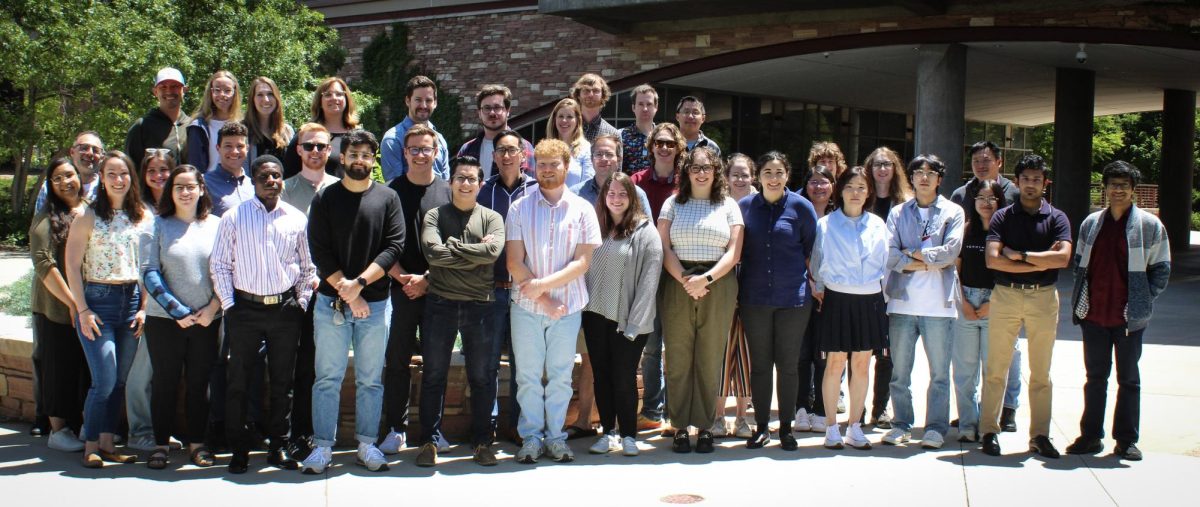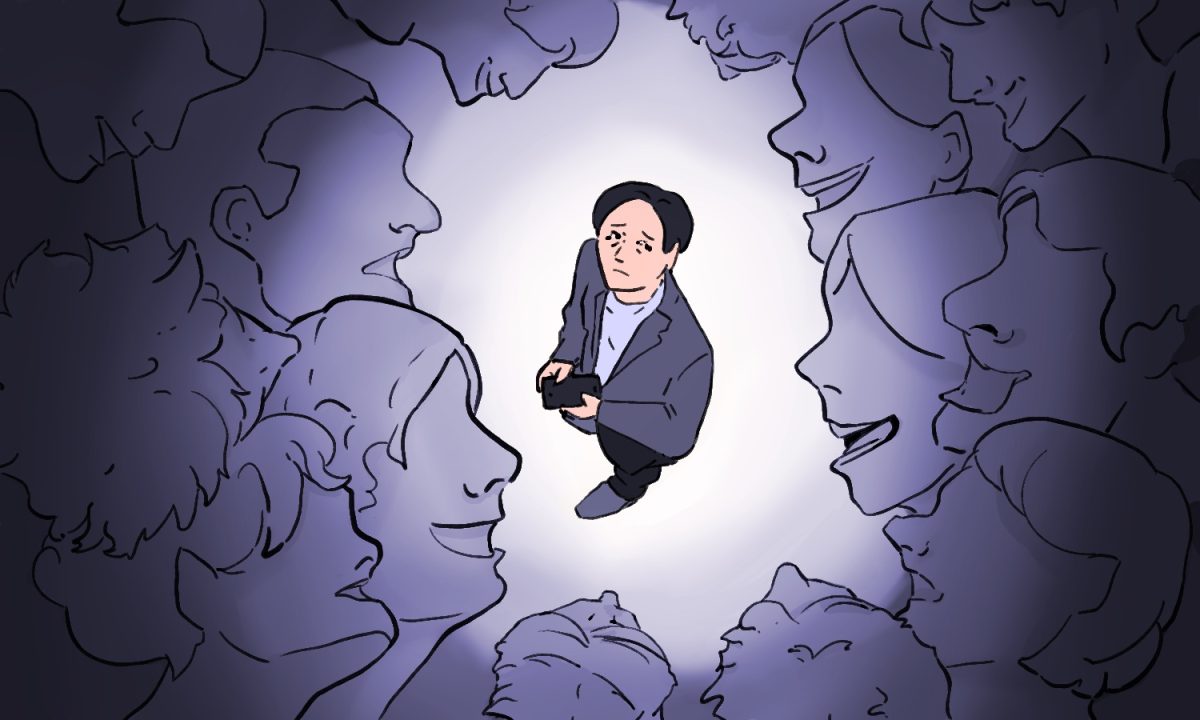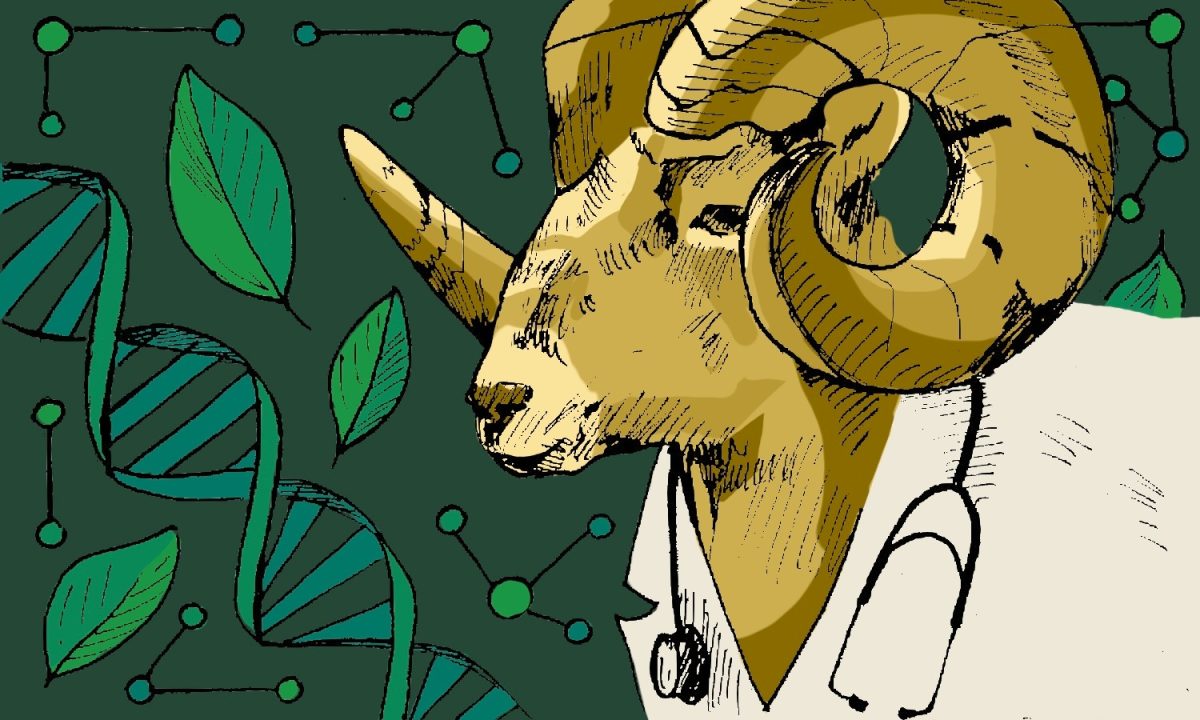Originally published in Nature, a scientific paper led by a Colorado State University-based team announced massive strides in technology that can be used to break down perfluoroalkyl and polyfluoroalkyl substances, also known as PFAS or forever chemicals. These compounds, which damage natural environments and are almost impossible to break down or destroy, are now one step closer to being removed from the environment.
Chemistry professor Garret Miyake explained that what makes these compounds forever molecules is that nature can’t break them down. The carbon-fluorine bonds within the molecules render them especially difficult to break. Currently, scientists use harsh and expensive methods such as incineration to destroy these molecules. Miyake’s research has identified a more viable method for breaking them down.
“We developed a photocatalyst, which is a molecule that can use energy from light and work at room temperature to break these bonds and then ultimately degrade PFAS molecules,” Miyake said.
This research has been long in the making. Miyake’s research group focuses on developing catalysts, a substance that speeds up chemical reactions, and has been working on the photocatalysts for 11 years. Alex Green, a Ph.D. chemist, joined the project as a graduate student and worked with Miyake on photocatalysts.
The group didn’t set out to destroy PFAS; rather, the group was focused on designing catalysts to foster challenging chemical transformations.
“I was working on a really niche subset of photocatalysts where we could exploit this reactivity, but we didn’t exactly know what we could apply it to,” Green said. “So I was like, ‘Oh hey!’ You know, on a chemical level these have CF bonds, and I think that with time and understanding, we can use these chemical tools, these photo catalysts, to basically break these (PFAS) bonds apart.”
Both researchers noted the importance of this work for building foundational scientific knowledge. However, Miyake noted a large gap between scientific findings from academic and consumer perspectives.
“If we can bring our perspectives and join forces with other groups that have their expertise in other perspectives, I feel like we can always do more impactful science.” -Garret Miyake, chemistry professor
“In our laboratories, we’re really focused on fundamental science and contributing to fundamental knowledge and if that fundamental knowledge translates to a commercial technology depends on a lot of factors,” Miyake said.
The work Miyake, Green and dozens of other researchers have explored is only the tip of the iceberg. In order to use this technology to remove PFAS from the environment, technology must first be developed to collect these molecules from the surrounding area. PFAS are usually found in very low concentrations, and while that may spell good news for the environment, it means that treating the chemicals in a field setting is difficult.
“There’s a little bit of disconnect from academic research to actually getting the new technology into the market and to commercialize it to where it’s in a viable, usable form,” Green said. “The next steps would be to work with CSU’s tech transfer office as well as our spin out start-up company, New Iridium, to make that happen.”
Both researchers are hopeful that continued research will find ways to turn these groundbreaking findings into a widely available PFAS-destroying technology. Through continued effort and collaboration, more research can broaden and strengthen the foundation of the research.
“A lot of technology we have today, like our phones, they’re just kind of common, but in reality it takes years of research and understanding of the fundamentals and fundamental science to actually get there,” Green said.
Collaboration, as both Green and Miyake pointed out, is essential to innovation of any kind. The work these researchers did was only possible because of the dedication of researchers before them and through organizations like the NSF Center for Sustainable Photoredox Catalysis and the Centers for Chemical Innovation.
“If we can bring our perspectives and join forces with other groups that have their expertise in other perspectives, I feel like we can always do more impactful science,” Miyake said.
Implementing PFAS-destroying technology into a marketable, useable form is going to take a lot of time, work and dedication. It requires more collaboration from other groups and more work from future generations of scientists. Even though a future solution is perhaps years down the road, the researchers hope their work will spark inspiration in students.
“Hopefully, you know, one day this will inspire someone who is looking into the CSU graduate program, or even CSU in general, and wants to do science,” Green said. “The hope is that someone might read an article like this or see something that demonstrates that we do cool science, and I hope that it inspires future generations to keep going.”
Reach Ella Dorpinghaus at science@collegian.com or on Twitter @CSUCollegian.










